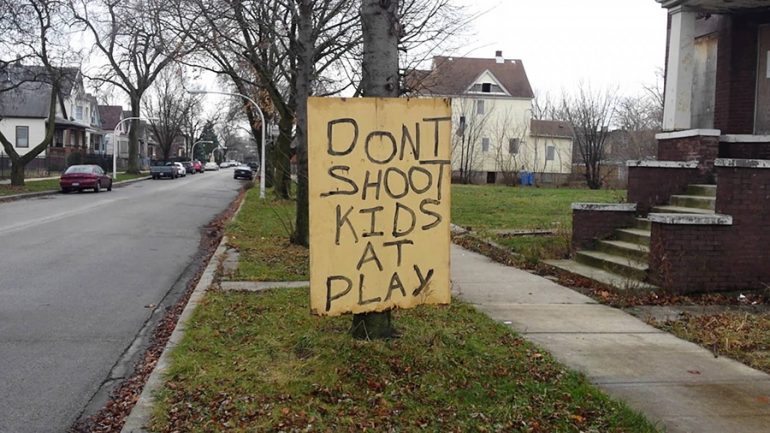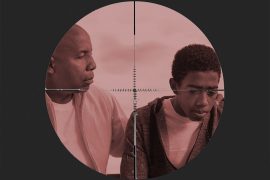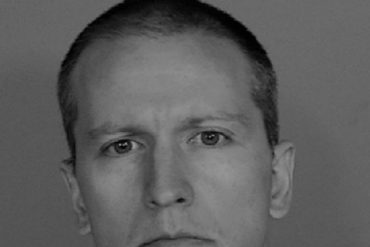This might be shocking to some, but I’m proud to say that I live in Englewood. Yep, uber proud.
Englewood is a neighborhood on the south side of Chicago, a place that’s often described in the mainstream media (paraphrasing here) as a piss poor community full of uneducated black thugs who kill each other. According to societal norms, the urban ‘hoods and “ghettos” are a place where good things are not expected to occur.
I’m none of those things, just a 32-year-old professional journalist, a life-long Englewood resident who gets up and goes to work every day, determined to make something of myself, and my life. In fact I coined the term “Englewoodian” and will tell anyone in an instant that there’s Good In Englewood (now a trending hashtag, also created by yours truly).
Yet every morning when I first pick up my I-phone, I anxiously look to see if there are any Google Alerts about my Englewood friends and neighbors. If there are, more often than not they’re bearing bad news.
Despite the fact that many Englewoodians like myself are actively engaged in improving the quality of life in our community, those efforts are rarely covered in the media. They never appear in a Google Alert, or any alert for that matter. Englewood was once home to Irish and German settlers back in the 1850s. It’s approximately 3.4 miles in size with about 63,000 residents. At one point it was known as the second largest shopping district outside of downtown Chicago. There are blocks full of beautiful Greystones, large Victorian mansions, manicured lawns and community gardens. (Yes, some areas also have vacant lots as well as abandoned buildings.) After white flight in the 1950s, Englewood became predominantly African American; by the 1980s increasing crime and falling real estate values began to erode the community fabric. Today, 42 percent of the population lives below poverty level, 29 percent have no high school diploma and 21 percent are unemployed.
I’m not denying there are serious problems in my community. There are countless headlines that read something like “4 Shot, One Dead” or “Five Shot, Including 2-Year-Old Girl, In West Englewood” – terrible, tragic news. According to Chicago police, of the city’s 77 communities, Englewood has the fourth highest rate of violent crime. There were 49 homicides here in 2014, 22 in 2015, and five so far in 2016 (as of March 26). In fact, Englewood is often the first neighborhood mentioned when Chicago’s horrific record of overall violence comes up (488 homicides citywide in 2015 and 130 so far in 2016 (as of March 26). When rappers coined the term “Chiraq” to compare the city to war in Iraq, Chicagoans often pictured Englewood. When director Spike Lee jumped on the bandwagon last year and released his film, also titled Chiraq, it only added to the insult to many Englewoodians, who don’t feel they or the community were fully and accurately portrayed in the movie. (Actually, I don’t believe anyone bought the storyline of Chiraq; since release last December the film has grossed only $2,653,000.)
At some point, enough is enough. I simply call it “poverty porn” when the media continues to create a picture of inescapable despair here, all the while giving free publicity to the criminals. In turn, this attention strokes the egos of these criminals; they beat their chests in triumph saying, “Look! I made the news!”
The danger behind a single, negative theme being told over and over again to the masses, about a single community, will no doubt negatively influence those who live in that community–as well as everyone else. Bottom line:
You start to become the perception, if there’s nothing to counter it.
What you don’t see in the media are folks like me: law-abiding residents who are college educated, employed, homeowners, families with both parents in the home, and black-owned businesses that have served the community for decades. You seldom hear about organizations like Teamwork Englewood, Growing Home, or Imagine Englewood IF, that work to mobilize residents and unite stakeholders to make Englewood a viable, thriving and sustainable community.

What you won’t see on the news: residents enjoying family, fun, and peaceful events around Englewood (Englewood Jazz Festival and the Englewood International Film Festival), or block clubs organizing around important community business developments. You won’t see empowering educational programs focused on technology initiatives for youth. There’s Wood Street Farm the only USDA-certified organic high-production urban farm in Chicago. There are the new economic developments like Whole Foods, community developments like Englewood Codes, a program that offers young children classes on web-coding, and investment projects like LargeLots that enable homeowners to purchase vacant lots for a dollar. Let’s not forget the newly built Kennedy-King College, and the recent additions of sit-down restaurants like Dream Café & Grille and Kusanya Cafe.
Englewood citizens like me are so tired of our community being labeled (directly or indirectly) as nothing more than a place for the poor, the uneducated, and the criminally inclined. We’re tired of the media stories that seem to portray every African American in Chicago as a menace to society. And we’re tired of hearing the stories of other African Americans like Sandra Bland, Freddie Gray, Trayvon Martin, Rekia Boyd, Michael Brown, Eric Garner and so many others who died because they were perceived as either a dangerous stereotype or a looming threat. These are the same stories that brainwash all of society against black people everywhere.
What you won’t see on the nightly news, in their minute-thirty segments: stories that explore and investigate decades of institutional racism, massive incarceration, police corruption and brutality, housing and hiring discrimination, unequal wages, predatory financial lending, disproportionate infrastructure funding. And on and on. If you did, some of the bad news coming out of Englewood might make a bit more sense. It might be put in perspective by thoughtful, in-depth reporting, and understanding might develop–as opposed to the fear and loathing created by a seemingly endless amount of mug shots of black men beamed onto our TV and computer screens.
My family put down roots in Englewood in the late 1960s, when my grandparents bought a two-family building (known as a two-flat). Englewood was still thriving economically at the time, and was somewhat racially diverse. Growing up, my childhood was fairly “normal.” Compared to others in the neighborhood, I might even say I was privileged. My single mom (working as registered nurse and later as a case manager for the state of Illinois) raised four kids. I attended grammar school in Englewood, went to high school in the south suburbs to be closer to my cousins, graduated with an undergraduate degree from the University of Illinois-Chicago and got my Master’s Degree in Broadcast Journalism from DePaul University. My mother made sure to keep us engaged in sports, summer camps, educational enrichment classes, karate, African drum and dance classes and Girl Scouts—all of which were in Englewood. One of my childhood memories was participating in the Englewood Back To School Parade as a cheerleader for my then elementary school; this parade has been a part of Englewood’s rich history for more than 50 years.

I personally became aware of the violence that occurred in and around my neighborhood at an early age. But as an aspiring journalist, I was also always consciously aware of the media coverage and watched many residents succumb to the narrative they saw portrayed over and over again: We must be no good because that’s what’s being mirrored to us on TV, in the papers, on the Internet.
As I grew older, I knew it was my civic duty as a resident, and my social responsibility as a journalist, to do something about it. Several years ago I began chronicling everything positive about Englewood, including my own day-to-day routines and life experiences, and sharing them in my blogs and on social media—sharing them with the public, with the media, with anyone who would listen. If you follow me, expect to read a post about me doing yoga on my back deck, enjoying a soy chi latte or a delicious meal full of fresh organic veggies bought from the local farm stand and sit down café in Englewood. There’s not a gunshot to be heard, or yellow crime tape to be seen, on my web pages.
I also speak out on WKKC 89.3 FM, a college radio station, during a weekly segment called “What’s Good In Englewood” to showcase all the daily positive occurrences in my community.
There are no police scanners broadcasting good things in Englewood, or news wires pumping out feel good stories about Englewood for journalists to jump on and cover. So, I take up the slack. I also Tweet the good news messages, using the hashtag #GoodinEnglewood. I find the most amazing stories from places like John’s Hardware and Bicycle Shop, a black owned business that’s been in Englewood for 50 years, or from teens who’ve been awarded full college scholarships due to their outstanding academic achievements.
My show has recently grabbed the attention of a few mainstream journalists; because I challenged them, and called out their unbalanced coverage of Englewood, I made the front page of the Chicago Tribune, I was featured in a recent documentary about Chicago’s South Side communities, interviewed by two local PBS stations in Chicago, and I appeared in the Huffington Post, among other media outlets.
I also believe, and try to live by, the ideology of always broadcasting positivity, creating positive vibes, and shifting my negative feelings or actions around me to focus on something positive. This same ideology is studied by Positive Psychology Researchers. And, most recently, my Good In Englewood work was featured in the New York Times Best Seller, Broadcasting Happiness.
I find it hilarious (a.k.a. offensive) when outsiders, who hear media accounts about how hopeless Englewood supposedly is, decide to come in and try to “save” the community. As a resident, it reminds me of missionaries who go to “Third World” countries with food and shelter, not realizing that they’re keeping them dependent on the contributions.
This type of “help” is called structural racism. It’s when policies and practices are structured to keep poor people of color with other poor people of color.
Sure, some individuals who come have good intentions but others capitalize on the violence in Englewood by barging in with their own political agendas to create service-based programs and organizations, in the hopes of attaining grant funding. In the end, this more often than not creates economic opportunities for them, instead of empowering the community economically.
There have been attempts to introduce a plethora of anti-violence programs, sports programs, and art and crafts programs as these do-gooders attempt to save the residents from each other. Some of the programs help address the violence temporarily but don’t ever reach the root of the issue.
Many outsiders think the problems can be remedied simply by spending hundreds of thousands of dollars, or even a few million, on summer basketball camps, arts and entertainment or summer antiviolence programs in Englewood. Yet when the summer ends and the camps pack up, nothing is left for the kids to do, and nowhere for them to go. While the effort is admirable, it’s just a temporary fix. A better idea? Instead, how about creating year-round workforce programs, entrepreneurial programs or educational programs that would in turn uplift and help equip young people with skills needed to be viable and competitive in the workforce. Provide resources, not just services with expiration dates that are dependent on government-based grants.
And please, take it from me, you really don’t have to leave the ‘hood to succeed. In order to change this existing ideology, and these stereotypes and negative portrayals of Engelwoodians, it takes far more people like myself to not leave–to instead invest in buying property, to become more civically engaged, to hold our elected officials accountable, and to create positive events that in turn, create sustainable solutions, positive memories and images for residents of this community.

That’s how you alter perceptions. That’s how you change the narrative.
That’s how you counter the negative images of crime, poverty and despair.
I long for the day when my Google Alerts about Englewood violence stop, when the shootings cease, and calm prevails. But until then I’ll just keep proclaiming my unconditional love for my community, and pushing for #GoodInEnglewood.
Yep, I’m proud of Englewood. And I’ll keep on talking and writing and Tweeting and blogging and posting and broadcasting that pride until everyone else is proud of Englewood, too. Rashanah Baldwin can be reached at rashanahb@gmail.com or on Twitter at @ms_shanahb or @rashanahbaldwin







This is off the chain, I like this. Black people are more than capable of building and sustaining a community. Many of these so called “inner city hellholes” are actually proud black communities. The violence, poverty, unemployment, and despair is all you hear about. Crime and violence is not all that’s going on. Many positive things are happening in the black community all day, everyday. Englewood has a lot of black owned businesses as well as many black communities all over the country as well. Violence is not the only thing going on in the black community, it’s just all you hear about. Everybody in the inner city isn’t poor, uneducated, and unemployed. That’s just not true. Black America is the 16th wealthiest nation on earth. Many of these so called “hoods” have so much economic muscle it’s astonishing. Far more than most people think. I’m from the Bay Area San Jose, Ca. But I know Oakland very well which has a huge black population, is full of black middle class families who work in degrees professions and own businesses. Yes, Oakland is full of successful black entrepreneurs and business owners all day everyday. Richmond too. The black people I knew growing up in San Jose, the vast majority were working people, educated, and law abiding citizens. People and families who sent children to private school and college, who own homes, and businesses. Not welfare recipients, crackheads, ex cons, or career criminals. A few of them chose that for themselves but most did not. 95 percent of the black kids I knew growing up went on to college and became working professionals, family men and women, and some became business owners. Scratch the surface of almost every major urban area of this large country of ours and you will a vast and rapidly growing black community of educated working professionals, homeowners, business owners, land owners, and successful and stable families living amazingly dynamic lives. Don’t Believe The Hype. Peace. Audi 5000.